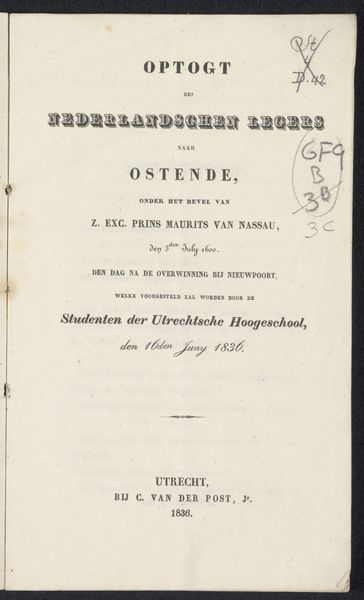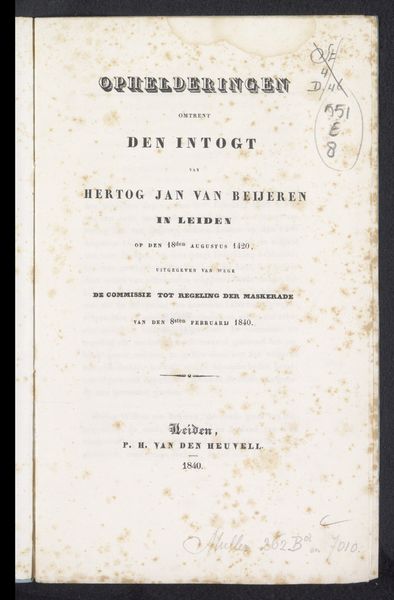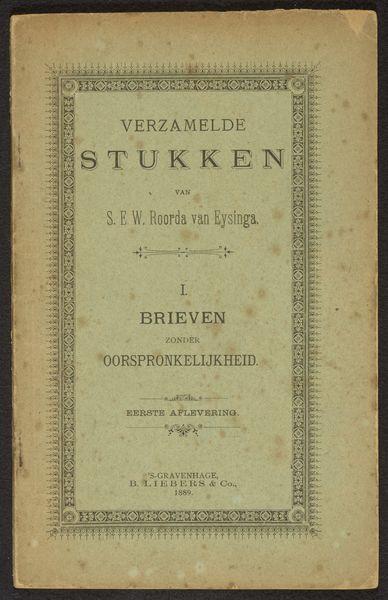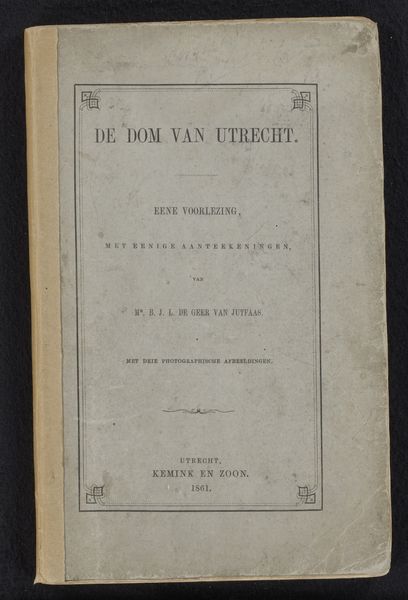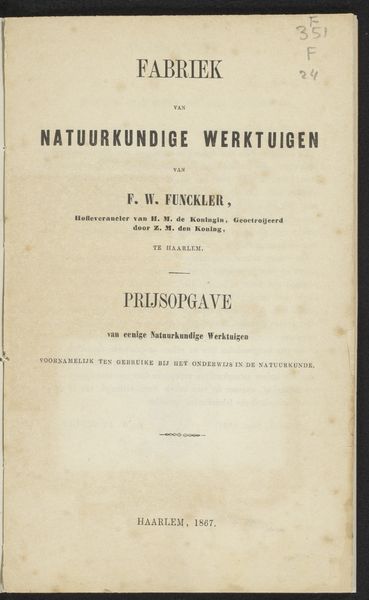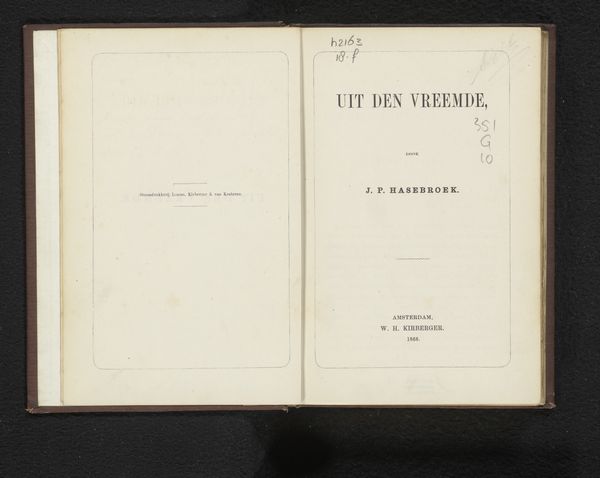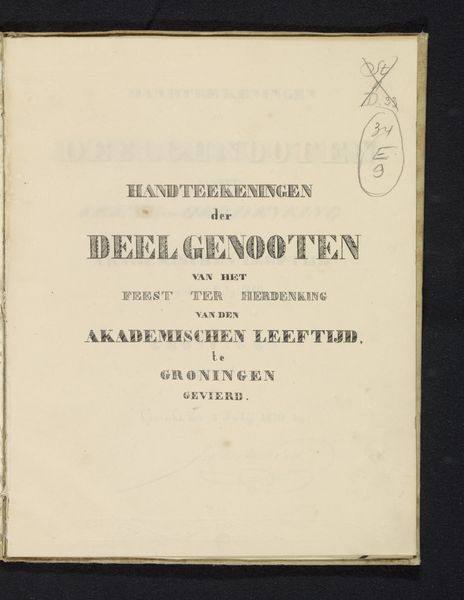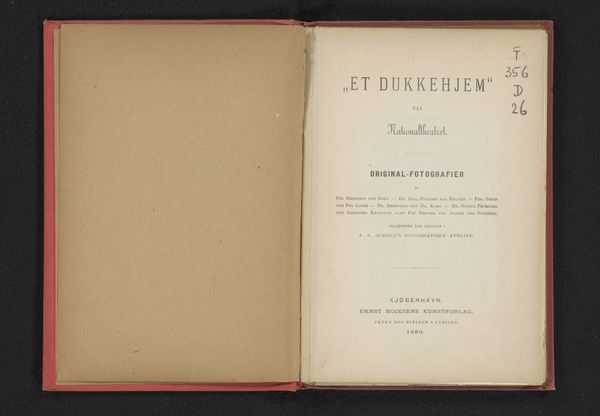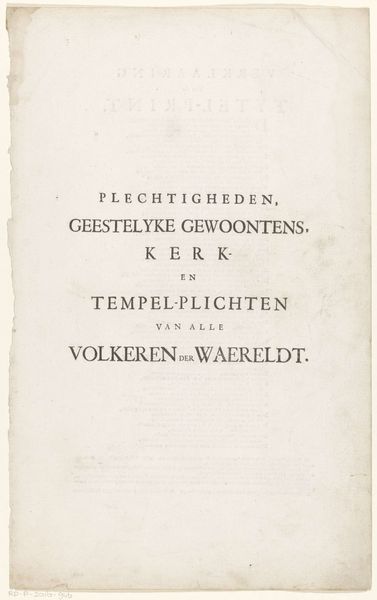
Naamlijst van de studenten in de historische optocht bij het tweede eeuwfeest van de Utrechtse Hogeschool, 1836 1836
0:00
0:00
print, typography
#
portrait
# print
#
typography
#
history-painting
Dimensions: height 215 mm, width 128 mm
Copyright: Rijks Museum: Open Domain
Curator: This print, created in 1836 by Leonard Eduard Bosch, commemorates the second centennial celebration of Utrecht University. Editor: At first glance, the typography is captivating. There is something very sober and elegant in how all of the titles are arranged on the page. What do you think? Curator: Indeed, observe how Bosch employs varying typefaces and sizes to establish a visual hierarchy. The weight of 'Naamlijst' immediately draws the eye, a classic strategy for emphasizing importance through form. Editor: A "Naamlijst" that sounds Dutch. From my understanding of symbolic Dutch traditions and looking at the words, ‘Optogt des Nederlandschen Legers naar Ostende’, I wonder if there's a hidden symbolism there linked to Dutch military identity of the time. What's the deal with the parade being about the Dutch army? Curator: You're correct; "Naamlijst" translates to "List of Names". This was commissioned by the student committee, documenting the historical procession planned for the 200-year celebration, which would depict... Editor: A symbolic staging. The "procession of the Dutch army towards Ostend." That tells us volumes, doesn't it? Ostend brings the collective memories to a siege during the Dutch Revolt. This wasn't just a list, but an effort to connect those students with the visual legacy of a specific narrative. Curator: It is an explicit visualization, linking these students to that foundational military narrative. If we analyze it formally, we note the strong horizontal and vertical axes. It mirrors the discipline they hope these students inherit. Editor: It’s more than mirroring; it’s a powerful assertion, weaving them into the very fabric of Dutch history! It prompts me to consider whether there was a tension here; a university presenting itself as a pillar of established values as revolutionary ideologies were brewing across Europe. Curator: An intriguing intersection indeed. It is a visual artifact that bridges design and history, provoking discussion about how institutional legacy communicates power, identity and self-image. Editor: Exactly, the list speaks far beyond its nominal purpose; it reverberates through historical symbolism to resonate powerfully even today.
Comments
No comments
Be the first to comment and join the conversation on the ultimate creative platform.
